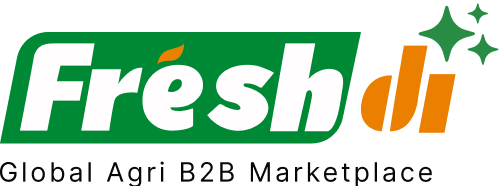🌾 Introduction – The Current State of the Rice Market in Global
The global rice market in mid-2025 is a whirlwind of shifting dynamics. On one hand, we’re seeing record-breaking rice production—surpassing 538 million tons for 2024/25—thanks to strong yields in countries like India, Bangladesh, and China[^1^]. On the other hand, the market is walking a tightrope due to policy flip-flops, climate disruptions, and demand fluctuations.
India, the world’s largest rice exporter, lifted its non-basmati white rice export ban in March 2025, after nearly two years of restrictions[^3^]. This policy shift sent ripples through global supply chains. Meanwhile, countries like the U.S. have adjusted tariffs, nudging exporters to find new markets[^5^].
Despite this record output, climate change continues to bite. Flooding in Bangladesh and Sri Lanka and droughts in parts of Africa have created localized shortages[^10^]. Add to that the growing demand for sustainable and specialty rice, and you’ve got a market that’s anything but boring.
Businesses sourcing rice globally need to stay on their toes. Responding quickly to trade policy changes, weather shocks, and shifting consumer preferences is no longer optional—it’s essential. That’s where platforms like Freshdi come in, helping buyers stay informed on real-time supplier performance, RFQ shifts, and verified sourcing options.
📰 Breaking News: Critical Updates Reshaping the Rice Landscape
1. India’s Export Ban Lifted
After placing a ban on non-basmati white rice exports in July 2023, India reversed the policy in March 2025 to reduce overflowing stockpiles[^3^]. This move has rebalanced global supply, but also intensified export competition.
2. U.S. Tariff Changes
The U.S. introduced new tariffs on rice imports earlier in 2025, shaking up traditional trade routes. Exporters are now scrambling to diversify their customer base[^5^].
3. Market Value on the Rise
The global rice market surged to $315.63 billion in 2025 and is projected to grow to $358.60 billion by 2030, fueled by demand for healthier and specialty rice varieties[^5^].
4. Climate Volatility
Unpredictable weather continues to impact production. Floods in South Asia and droughts in Africa are proving that record global output doesn’t always translate to local abundance[^3^][^10^].
🥇 Top 6 Verified Rice Suppliers in Global in Week 11 of 2025
These suppliers are active on Freshdi and have been verified based on export volumes, buyer satisfaction, and product quality. If you’re looking to source rice amid today’s market turbulence, these are the players to watch.
1. Nav Enterprises
- Type: Parmal Rice
- Year Established: 2025
- Trade & Payment Terms: To be discussed
- Why They Stand Out: A rising star in rice exports, this newcomer is rapidly gaining traction for consistency and reliability.
2. TRIYAMBAK GENERAL TRADING
- Type: Basmati Rice Sella 1121
- Packaging: 50 KGS BAG
- Trade & Payment Terms: To be discussed
- Why They Stand Out: Known for high-quality Basmati with strong buyer reviews for aroma and grain consistency.
3. NEOS GLOBAL – DIRECT SERVICES LLC
- Type: Basmati Rice
- Year Established: 2013
- Trade & Payment Terms: To be discussed
- Why They Stand Out: A well-established supplier with a solid export footprint across MENA and Southeast Asia.
4. NCEL
- Type: Basmati Rice
- Year Established: 2023
- Trade & Payment Terms: To be discussed
- Why They Stand Out: Young but agile, NCEL has quickly adapted to changing market trends and focuses heavily on sustainability.
5. DH. THUNGTHIP CO., LTD.
- Type: Thai Jasmine & Brown Rice
- Year Established: 2024
- Trade Term: FOB
- Payment Term: T/T
- Packaging: 1kg
- Why They Stand Out: A Thai-based powerhouse promoting local farmers and offering 100% pure jasmine rice with a strong focus on traceability.
6. GIA HUNG TRADING & MANUFACTURING CO., LTD
- Type: Jasmine Rice
- Packaging: 10–50 kg bags
- Trade & Payment Terms: To be discussed
- Why They Stand Out: Known for premium Vietnamese Jasmine rice, this supplier is expanding rapidly into African and Middle Eastern markets.
Dynamic Ranking Note: Supplier rankings on Freshdi are dynamic. Weekly and quarterly updates reflect changes in RFQ activity, buyer feedback, and trade volume. Check the platform for the latest “Supplier of the Month” announcements and sourcing trends.
📊 Market Navigation – Strategic Responses to the Rice Landscape
🌟 Key Opportunities
- Booming Demand for Premium Rice: Fragrant varieties like Jasmine and Basmati are hot sellers, especially in the Middle East and Africa.
- Sustainability Edge: Buyers are favoring eco-friendly and traceable rice, opening doors for suppliers using clean cultivation techniques.
- Tech Transformation: Blockchain and AI-powered traceability tools are giving suppliers a competitive advantage.
⚠ Key Risks
- Climate Shocks: Weather events are disrupting regional outputs—what’s abundant globally might be scarce locally.
- Trade Restrictions: Sudden policy reversals, like India’s previous ban, can throw supply chains into chaos.
- Geopolitical Uncertainty: Tariff changes and shipping bottlenecks due to geopolitical tensions are increasing costs.
🔁 Strategic Adjustments for Rice Buyers
- Diversify Sourcing: Don’t rely solely on one country. Mix suppliers across India, Vietnam, and Thailand.
- Stock Smart: Build up buffer stocks ahead of peak seasons to protect against supply shocks.
- Use Digital Tools: Platforms like Freshdi offer real-time RFQ updates, supplier performance analytics, and risk alerts.
📅 Short-Term Outlook (Q3–Q4 2025)
- Prices: Golden Sella is hovering around $1.08/kg, but could spike with new trade tensions or weather events.
- Supply: Strong overall, but tight in flood-affected areas like Bangladesh and Sri Lanka.
- Hot Products: Brown rice, parboiled, and fortified varieties are gaining favor in health-conscious markets.
📌 Key Takeaways for Buyers in a Fast-Moving Market
- Adapt Quickly: The global rice market is moving fast. Be ready to change your sourcing game plan at a moment’s notice.
- Watch the Climate: Weather is the wild card. Localized shortages can disrupt even the best-planned supply chains.
- Go Premium, Go Green: Specialty and sustainable rice isn’t just a trend—it’s the future.
- Use Smart Platforms: Tools like Freshdi empower buyers with verified supplier networks, real-time RFQ trends, and market insights tailored to today’s volatile conditions.
✅ Sourcing Checklist for 2025 Rice Buyers
- [ ] Review suppliers’ certifications and export history on Freshdi
- [ ] Diversify sourcing between India, Vietnam, and Thailand
- [ ] Monitor trade policy updates weekly
- [ ] Opt for climate-resilient and specialty varieties
- [ ] Use digital platforms for RFQ alerts and price trends
🔮 Future Outlook – What’s Next for Global Rice
Looking ahead to 2026 and beyond, the rice market will demand more from all players. Production needs to rise by 15–20% to meet global demand by 2030[^10^]. At the same time, climate change, shifting diets, and trade disputes will keep everyone on edge.
For buyers, staying connected through trusted platforms like Freshdi will be key. Whether it’s discovering a new supplier in Vietnam or tracking RFQ trends in the Middle East, being informed is being empowered.
📚 References
- USDA May 2025 Rice Outlook
- USDA April 2025 Trade Forecast
- ESSFeed – Navigating Shortages
- Global Newswire – Market Forecast
- IRRI Regional Partnerships
- TradeImex Export Data
- Renub Market Forecast
🙋♂️ FAQs
1. What is causing price volatility in the global rice market in 2025?
Primarily, climate disruptions and trade policy shifts. India’s policy changes and regional floods have created supply-demand imbalances.
2. How can I find verified rice suppliers quickly?
Platforms like Freshdi offer supplier verification, RFQ insights, and performance rankings to make sourcing easier.
3. What rice varieties are trending right now?
Jasmine, ST25, Brown, and Parboiled rice varieties are seeing a surge due to health and premiumization trends.
4. How is climate change affecting rice sourcing?
Extreme weather events are creating regional shortages—even if global production is high. It makes localized sourcing riskier without diversification.
5. Why should I consider sustainability when sourcing rice?
Many markets now demand eco-friendly and traceable products. Sustainable sourcing not only meets these needs but also attracts premium pricing.


